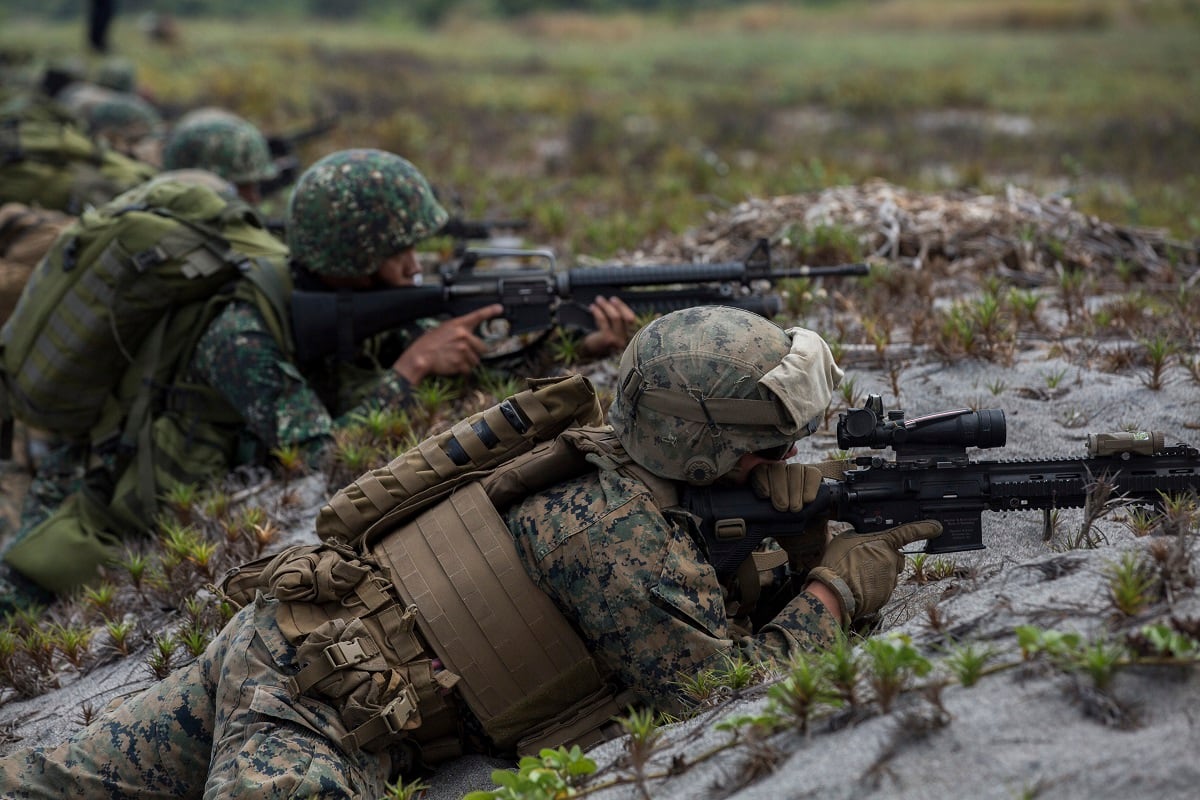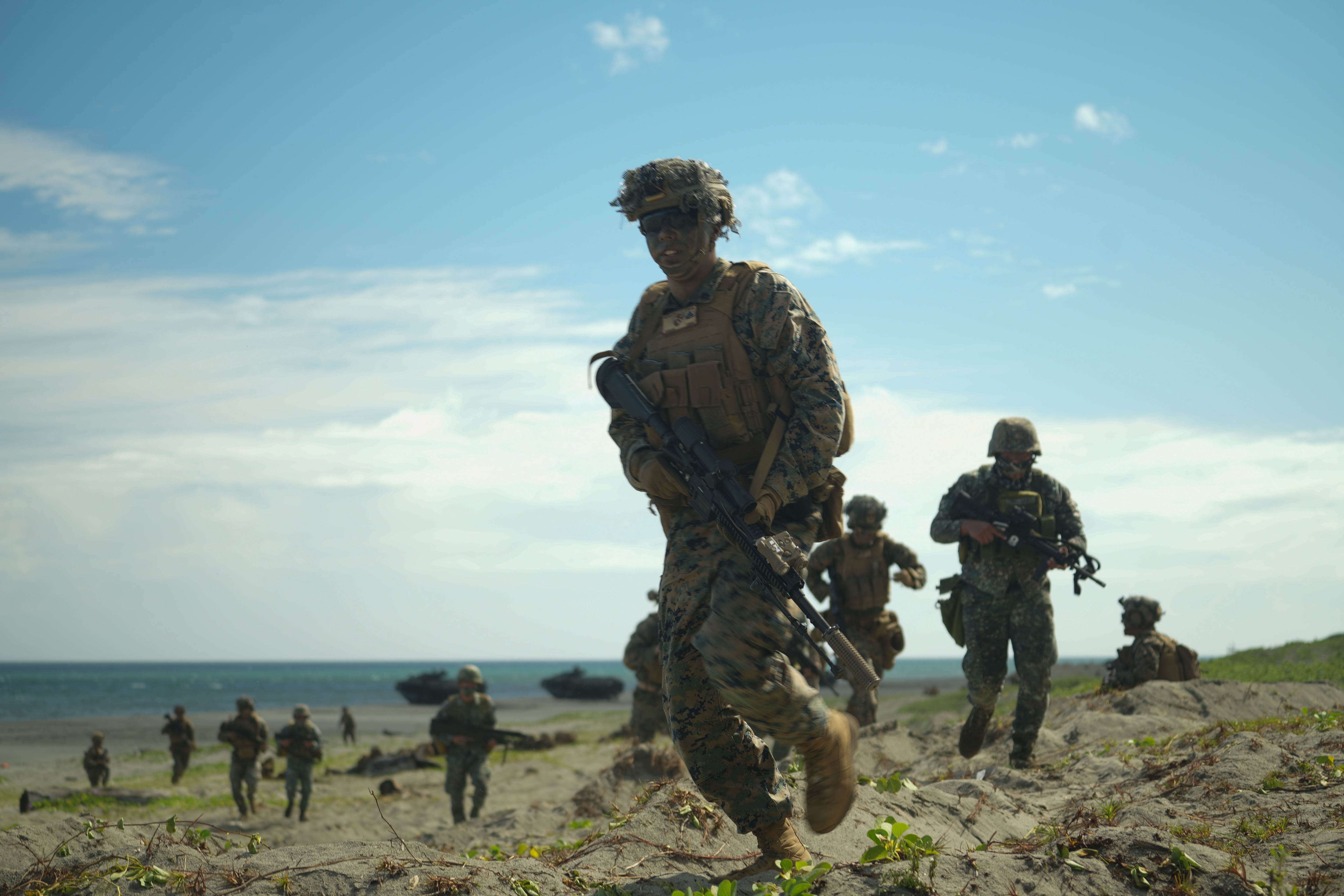For nearly 40 years, Marines have joined counterparts in the Philippine-led bilateral exercise known as Balikatan.
But the late-March to early April exercise saw a new development when it included the inaugural deployment of the Marine littoral regiment.
The 3rd Marine Littoral Regiment is the Corps’ purpose-built unit to develop its new way of war-fighting. That’s a plan to counter peer adversaries such as China in the close-to-shore littoral space, leveraging allies and partners such as the Philippine military.
Marine Corps Times interviewed Marines by email at various echelons and units who participated in the exercise after its conclusion and following Commandant Gen. David Berger’s release of the 2022 update to Force Design 2030: the Corps’ transformation plan.
RELATED

Col. Christopher Haar heads Combat Logistics Regiment 3 and commanded all Marine forces during the Balikatan exercise.
The 30-year active duty veteran planned joint, combined interoperability events, and signed off on any high-risk training, as well as working with Philippine counterparts.
One of the interesting developments was seeing U.S. Army joint partners load MIM-104 Patriot Systems aboard ship to provide air defense during the exercise. That’s not been the typical route and for decades most units in combat theaters had little to worry about when it came to air defense.
That’s not the case anymore.
Being inside the first island chain on China’s periphery opens up units to attack. Air defense is a must.
“Our forces worked together to increase our capabilities across the warfighting functions to help (Philippine military) on their mission to become a world class military by 2028,” Haar wrote.
The exercise provided an early testing ground as the Corps builds the Marine littoral regiment and flows in capabilities such as a land-based naval strike missile, counter electronic warfare and a host of information warfare-based platforms into all of its formations.

“Moving the MLR Headquarters into the first island chain to partner with the Armed Forces of the Philippines is a great opportunity to lay the framework for future employment of the MLR,” said Col. Timothy Brady, 3rd Marine littoral regiment commander.
Brady added that lessons from the exercise will help refine concepts as the unit evolves.
“Adapting to change is not easy,” Brady said. “The days of showing up to a fully established forward operating base are gone.”
Lt. Col. Dan Eagan deployed as part of Balikatan in 2012, 2013 and 2014. The operations officer was also part of major regional exercises such as Pacific Blitz 19, Pacific Fury 17 and Large Scale Exercise 21.
“Probably the biggest surprise for me was the level of interoperability we were able to achieve with the (Philippine military) despite having nearly zero opportunities to work together over the past two years,” he said in an email.
This recent exercise is likely to feed into his next major training event. That’s because Balikatan used the northern Luzon area extensively, and later this year the Kamandag-6 exercise will be working similar locations.
The big picture piece of the exercises get a lot of attention, but Eagan noted that lower level tactical work helps a ton. Marines and Philippine troops ran amphibious operations and littoral maneuver.
That’s where the rubber meets the road, or the keel cuts the water, in maritime terms.
Capt. Steven Anderson commanded the 3rd Reconnaissance Battalion detachment for the exercise and 1st Platoon, Force Recon Company.
Months of planning went into the variety of joint and partner exercises, from tactical to operational level work, multiple interviewees wrote.
Anderson met with his Filipino counterpart, Capt. Allen Waeyen each night before the next day’s training. The Filipino teams not only had exercise training but also supported their nation’s own national security missions at the same time, Anderson wrote.
Anderson was pleasantly surprised that communication was not an issue, which it can be when working with allies and partners.
“The moment we started training we were running, it was a blast and we got a lot more done than I expected,” Anderson said.
The Marine recon units, Army Special Forces units, Royal Australian Army commandos all conducted a joint heliborne raid on Corregidor.
“I learned how proficient our partners are,” Anderson wrote. “Filipino Marines are hard, battle hardened and proud and they are definitely one of the better organizations I have ever worked with.”
Sgt. Brent Stephens worked as both the team leader for 3rd Force Recon Company and the sniper subject matter expert.
It was a lot of early mornings and late nights. A familiar rhythm for recon Marines.
“There was no slow transition to the weather, to become familiar with the terrain and to exchange personal pleasantries with this partner force,” Stephens wrote. “It was full equipment and full immersion on day one, which is how it should be.”
Stephens and his Marines saw firsthand how for the Filipino Marines, information is vital. They have used their tactics, not as ideas, but as doctrine, because that’s what’s saved their lives in intense fighting such as the 2017 Battle for Marawi.
“We need this experience just as much as the Filipino forces,” Stephens wrote. “By rolling directly into the exercise, it added another layer of realism to find solutions on the ground and stay fluid with a constantly evolving situation.”
Todd South has written about crime, courts, government and the military for multiple publications since 2004 and was named a 2014 Pulitzer finalist for a co-written project on witness intimidation. Todd is a Marine veteran of the Iraq War.




